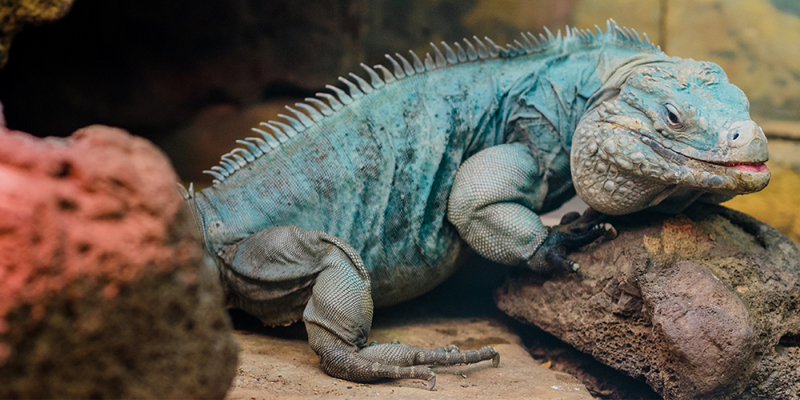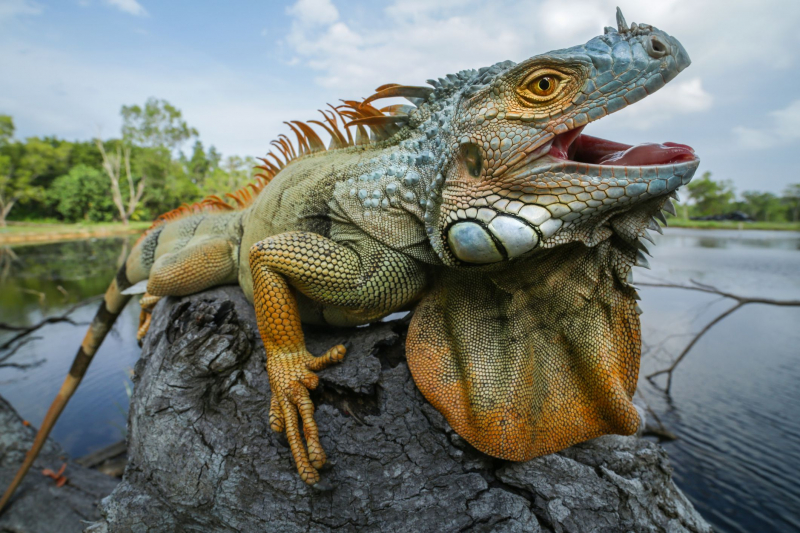They have a third eye
Iguanas have excellent vision with their "normal" eyes, so this is just a bonus. The two primary eyes of the iguanas, which also include color vision and distance perception, are quite efficient. The third eye of your iguanas has a lens and retina, much like the other two, but lacks an iris, giving it a distinct appearance from the other two. The third eye is smaller than the other two and has scales covering it as well. This extra eye is not quite like a normal eye, this "third eye" aids the lizard in controlling body temperature. It primarily functions as a circadian mechanism to control the lizard's sleep cycles. Additionally, the third eye's direct connection to your pet's brain increases its significance and allure. Therefore, instead of the optic center where the other two eyes are supposed to convey their alarms, this third eye delivers important messages straight to the brain and pineal gland.
The third eye, which is located at the top of your iguana's skull, operates quite differently from the other two. An alleged "third eye" can be found on the top of iguana's heads, which resembles a scale on top of their skulls. The parietal eye of an iguana has simpler physiology than the other two eyes and is simply able to detect changes in light and darkness which help iguanas anticipate predatory birds approaching from above by seeing abrupt shadows. Since it warns the reptiles of any approaching dangers, it is more than adequate to assist iguanas in avoiding predators.











